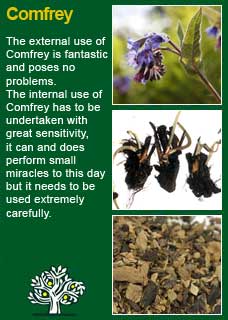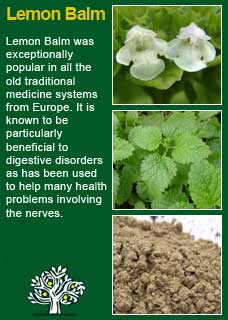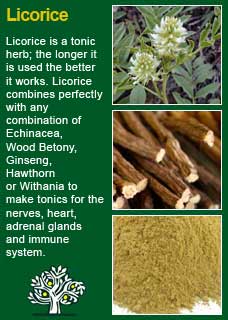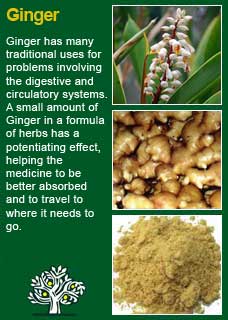
|
|
||||
| Our Pages ABOUT CONSTITUTIONAL MEDICINE
|
In herbal medicine we use the leaves of this famous mint. Getting up close to the leaf of a Peppermint plant and smelling it is probably the best way to know it's what you have. Mint leaves have similar, smooth looking characteristics but their smells are different enough to place them apart.
Peppermint has many historical and current indications. The 'after-dinner mint' of today has roots in ancient customs of concluding feasts with a sprig of Peppermint to soothe the stomach. Dioscorides, a famous Greek physician who lived over 2000 years ago wrote that a spray of Peppermint worn on his cloak raised his depressed spirits. The Roman naturalist Pliny wrote that Peppermint 'reanimates the spirit' and he recommended 'hanging it in sick-rooms to assist convalescence'. The oldest surviving medical text, the Egyptian Ebers Papyrus, describes the virtues of Peppermint as a stomach soother. The herb was so valued in ancient times that it was accepted as a payment for taxes (just try doing that now!) In Luke (11:39) Jesus scolds the Pharisees "you pay tithes of Mint and Rue but have no care for justice and the love of God". Dried leaves have been found in Egyptian pyramids dating from 1000bc. Archaeological evidence would suggest that Peppermint (or at least 'Mint' as there are actually many hundreds of different kinds of mint) has been known and used by people for at least ten thousand years. Peppermint has been used since ancient times to assist a wide variety of digestive disorders where a mildly sedative and anti-cramping remedy is required. Such conditions include; colitis, travel sickness, excess gas, colic, nausea, vomiting and poor appetite. Peppermint also has a traditional use in fever treatments where its cooling effects can be very soothing in the ‘hot’ stage of a fever when the patient feels restless, agitated and overheated; notably distinct from when they feel cold and shivery. S Tilgner writes 'due to its menthol content, Peppermint alleviates itchy skin. It is applied to insect bites, stings, poison oak and itchy skin in general, there is nothing better to put on a mosquito bite' H Felter writes 'Peppermint infusion is a very grateful agent to allay nausea and vomiting, and to break up a cold. The essence is a common and unexcelled carminative for gastrodynia (pain in the abdomen) and the flatulent colic of children, and is used extensively to modify the action and mask the taste of other WM Cook writes 'this herb is a diffusive stimulant and relaxant, acting as an anti-spasmodic and carminative. It is mostly used for flatulence and wind colic; but may be employed for other sudden pains and crampings through the abdomen' King's Dispensatory writes 'Peppermint is a powerful diffusive stimulant, antispasmodic, carminative and stomachic. It undoubtedly possesses marked antiseptic properties. Used in the treatment of gastrodynia, flatulent colic, hysteria, spasms or cramps of the stomach, to allay the griping of cathartics, to check nausea and vomiting, and to disguise the unpleasant taste of other medicines. Equal parts of the essence and alcohol, used by atomization, relieve the cough of bronchitis and pneumonia. The fresh herb, bruised and applied over the bowels, will often allay sick stomach, and is efficient in cholera infantum. The same kind of application sometimes relieves headache' The British Herbal Pharmacopoeia (BHP) describes the actions of Peppermint as locally 'antiseptic & antipruritic (for itching) and internally as a spasmolytic, carminative, diaphoretic & antiemetic'. It says it is indicated for 'intestinal colic, vomiting of pregnancy, flatulent dyspepsia, common cold & dysmenorrhoea. The BHP recommends a dose of 2-4 grams of by infusion up to 3 x daily and suggests it may be combined well with Elder, Yarrow and Boneset in influenzal colds. D Hoffmann adds the actions of 'nervine, anti-inflammatory, aromatic and analgesic' and suggests a dose of 1-2mls up to 3 x a day of a 1:5 tincture made in 40% ethanol. Or a cup of boiling water over a heaped tsp (this will be just over 1gram) of the dried herb infused in a covered container for 10 minutes.
~ The external application of Peppermint oil (10% mixed with ethanol) reduced headache sensitivity and intensity comparable with the drug acetaminophen (equivalent to 1 gram or two capsules of Paracetamol) in a randomised, double-blind, placebo-controlled crossover trial (Gobel H, Fresenius J, Heinze A et al. Nervenarzt 1996;67(8):672-681) ~ In a randomised, double-blind, multicenter, plabebo-controlled trial 75% of children with irritable bowel syndrome who received enteric-coated peppermint oil experienced reduced severity of pain after two weeks of treatment (Kline RM et al.J Pediatr 138(1):125-128, 2001) ~ The authors, titles and the 'where-and-when' published of nearly 300 further studies and articles on Peppermint are listed in a PDF found here
High doses of Peppermint oil are to be avoided and any amount of the oil should be used with caution for the very young. Aside from that Peppermint is very safe to use for pregnant women and for the young and old. One of its traditional uses has been to help with pain periods and, consequently, it has been linked to having an action on the womb that has seen some authors advise against its use in pregnancy. There is really no evidence to support this and, as it has helped many women with morning sickness of pregnancy and truly is safe to use throughout this time, it should be known as safe. However, it doesn't suit everyone and as WM Cook, also quoted above, writes 'Most stomachs receive it gratefully, and it often allays vomiting; yet some persons greatly dislike it, and its stimulating qualities unfit it for use when the stomach is sensitive'
For some years now, against this proven and safe way of herbalism, there has been a rising tide of excessive caution and scare-mongering in many parts of the world. The same authorities that, not so long ago, decried herbal medicines as ineffectual, have now taken up a different adversarial position; that they are dangerous substances that should only be prescribed by Doctors, who of course have zero training in them. Unfortunately, the same unnecessary fear and worry has crept into many natural health websites and popular publications on herbs. Herbs that we have safely used for thousands of years, that have no reports of adverse reactions in the medical literature despite widespread use by millions of people, are suddenly described as contraindicated because of something that should have been seen as completely unimportant, or at the utmost a merely theoretical concern, such as a laboratory study on one of the herb's constituents to use an all too common example. I wonder sometimes if the writers of such articles feel that the herb will be more deserving of respect if it is thought to be a little bit dangerous, in other words more like a drug than something that has simply come out of the earth and been used by ordinary people for generations beyond count. There is just so much misinformation about herbal medicine on the internet now. Ludicrous claims and cautions abound in equal measure; it seems like one group are trying to make money out of the public whilst the other are busily trying to scare them off. I have to believe that the kind of reader who takes the time to read pages on herbs that are as extensive as this one is much less likely to be swayed by marketers or misinformers. I hope that you will keep your wits about you if you get conflicting opinions from people who have never really got to know these herbs, who have never worked with them, or learned how to use them safely and effectively. I want to remind you that the reason that herbs can never be patented and owned by any individual or corporation is because they are, and always will be, the People's medicine. They belong to all of us and it is my great hope in sharing this work that you will learn how to use them wisely for yourself, and the people you care for. Be safe, but do not be afraid.
Peppermint oil has a paradoxical nature when used on the skin. It seems both cooling and warming at the same time and I have found it to be a wonderful addition to external treatments when I really want to help move a 'stuck' condition. For example, it can usually relieve a bad headache if used judiciously around the top of the back of the neck or the temples (just a drop per area, lightly massaged in and then the hands carefully cleaned so as not to contact the eyes!) Taken internally it is quite clearly a cooling herb and I use as a lot of Peppermint in formulas where I want to improve the flavour at the same time as providing a gentle digestive tonic for someone who has a bit too much fire in their belly! In the past I have also often tried using Peppermint oil in an enteric coated capsule (meaning it only gets digested after it passes through the stomach) for excess gas and cramping in the intestine. I think it has been quite successful in this regard but on balance I find using a blend of digestive herbs rather than just the Peppermint oil alone has been more reliably successful. If you who are reading this are studying herbal medicine or just have your own reasons to want to know this ancient plant ally at a much deeper level then I urge you to make a cup of peppermint tea (or take a small dose of its tincture) and then, with a quiet and attentive mind, observe for yourself how it makes you feel. This old form of experiential learning is a wonderful way to appreciate the 'action' of the herb and having done this myself as well as with colleagues and students I think that if you do this you will get a real appreciation of how much in times past it was regarded for 'lifting the spirits'. If you are quite a 'cool' constitution (more about that below) then you might find you only want small doses of Peppermint, conversely if you are clearly a 'hottie' you will hardly be able to have too much of it... Further to this, if you would like to learn more about the ancient art of pulse testing, a simple but powerful way to ask the intuitive intelligence of the body for its responses to a herb by feeling the pulse whilst giving a tiny dose by mouth, read here Peppermint does not need to be in large doses to work and in fact I personally feel it works better in subtle amounts where the smell and feel is obvious but not overpowering. I guess I would add about 10-20 mls to a 200 ml tincture formula; an example below. Not more than a half a gram or so in a tea. Peppermint combines perfectly with Licorice root and Ginger root for many functional digestive disorders and discomforts.
Take a tsp, approx 4mls, as often as needed to quickly relieve indigestion, colic, gas, nausea, bloating and other such common torments to the digestion!
Much of the information here about the traditional uses of Peppermint is consistent with the model of thinking whereby one may treat problem A with plant B. There is value in this approach, especially in how it helps us pass on useful knowledge to one another, but it falls short in one vital area; and that is that people are not all cut from the same cloth! Something that works brilliantly for one person may do less for another -- why is this? Part of the reason is that people vary in their constitutions as to whether they are either hotter or cooler and, at the same time, either dryer or damper. This useful and rather fascinating subject is introduced further here Another big part of using the right herb when it is most needed comes from understanding the need to treat what is going wrong for the person that had led up to their getting a health condition. In this light, Peppermint can particularly offer its benefits when a relaxing action is needed in the 'cycle of healing', more about this here
Please understand that I cannot advise you, including on products or dosage, without seeing you in person in my clinic but for ideas
on how you might find a good herbalist in your area read here |
|
|
© 2011 R.J.Whelan Ltd












